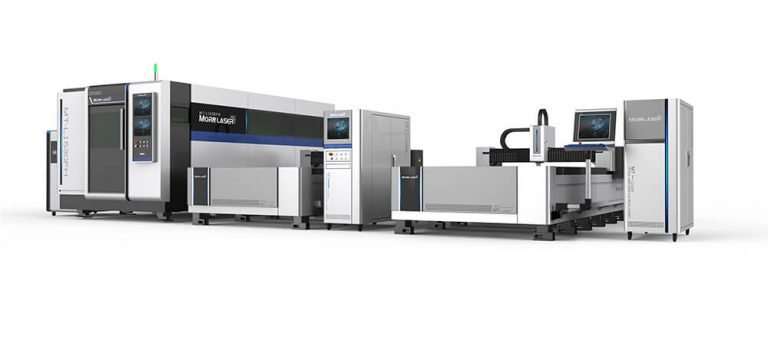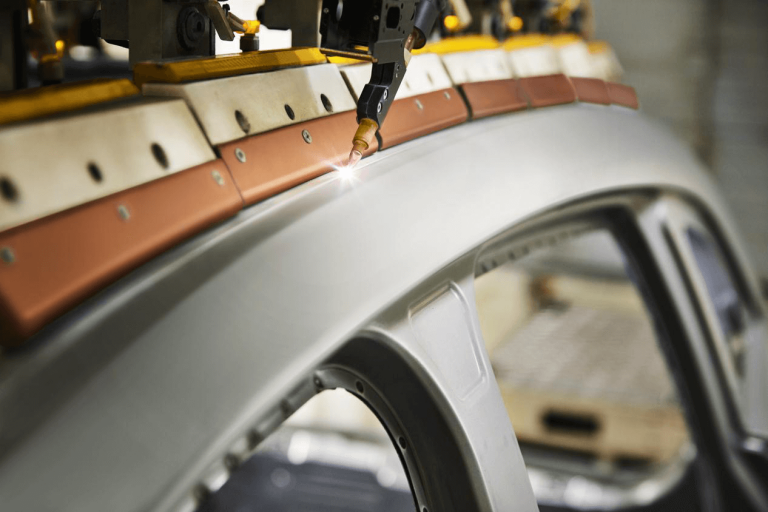In summer, the temperature rises, thunderstorms increase, and frequent rainfall and humid environments can easily cause condensation inside the laser, which will reduce the performance of the laser cutting machine or even damage it.
How to avoid laser condensation? What should I pay attention to when using lasers in summer?
Although the fiber optic transmission cable of the fiber laser can be used in harsh environments, the laser itself has higher requirements for the use environment.
- Measures to avoid condensation
Avoid condensation in the internal and external environment of the laser without air conditioning (laser damage caused by condensation in the internal environment is not within the scope of the normal warranty of the laser)
If you use a laser that does not have an air conditioner and is exposed to the working environment, once the cooling temperature is lower than the dew point temperature of the laser environment, moisture will be deposited on the electrical and optical modules. If no measures are taken at this time, the outer surface of the laser will start to follow the condensation. Therefore, once you see condensation on the laser housing, it means that the internal environment has condensation. Work must be stopped immediately and the laser working environment must be improved immediately. The solution is to configure an independent air-conditioned room for the laser.
Avoid condensation inside and outside the laser with air conditioning(Lasers with air conditioning may still cause condensation in the internal environment)
When using a laser with its own air conditioner and exposed to the working environment, the cooling and dehumidification effect of the air conditioner will greatly reduce the dew point temperature of the environment inside the laser. Generally set the refrigeration temperature of industrial air conditioners to be the same as the cooling water temperature.
When the ambient temperature is lower than 38℃
Industrial air conditioners can maintain the safety of the environment inside the laser, but there may be condensation on the surface of the laser housing. If condensation does not form flowing water droplets, it is safe. If there are a large number of flowing water droplets and there are obvious water stains around the laser, a safe non-condensing working environment must be established for the air-conditioned laser.
When the ambient temperature is higher than 38℃
The cooling capacity of the industrial air conditioner is not enough to maintain the safety of the laser’s internal environment, and condensation in the internal environment will still occur. Over time, the external environment will also follow the condensation. Therefore, there should be no obvious heat source around the laser, and the hot air outlet of the water cooler should not face the laser.
- Avoid condensation inside the laser head
The processing is abnormal when the season changes or the temperature changes greatly on the day, you can check whether there is environmental condensation in the processing head
Condensation can cause serious damage to optical lenses:
#The cooling temperature is lower than the ambient dew point temperature, which will cause condensation on the inner wall of the processing head and the optical lens.
#Using auxiliary gas below the ambient dew point temperature will cause rapid condensation of the optical lens.
It is recommended to add an evaporator between the gas source and the processing head to keep the gas temperature close to the ambient temperature to reduce the risk of condensation.
- Use the dew point temperature checklist
Training end-users to use the dew point temperature checklist can effectively reduce the risk of condensation in the internal environment of the laser and the processing head
The temperature of the cooling water has a direct impact on the electro-optical conversion efficiency, stability, and condensation. In addition, the quality of the cooling water will deteriorate over time, and there may be many impurities or microorganisms inside. In some extreme cases, it may cause internal corrosion of the optical output end, which may cause fiber failure. Therefore, you must clean the water tank and change the water regularly. MORN recommends that customers replace the cooling water and clean the water tank every 1-2 months. Normally, the cooling water temperature is set as follows:
The water temperature of pure water (also called low-temperature water, used to cool the laser module) should generally be set at about 21 ℃ and can be adjusted appropriately between 20 and 25 ℃ according to the situation. The water temperature settings of different types of lasers are different. Please consult MORN laser professionals to adjust this adjustment value.
Deionized DI water (also called high-temperature water, used to cool optical parts) The water temperature of the water circuit should be set between 26 ℃ and 27 ℃. This temperature should be adjusted according to the ambient temperature and humidity. Generally speaking, the higher the ambient temperature The higher the humidity, the higher the temperature of DI water should increase accordingly. The basic principle is: DI water temperature should be above the dew point.
Summer is the season with a high incidence of laser failure. The statistical results show that most of the laser failures are closely related to the user’s operating sequence and equipment operating environment. When the ambient temperature in summer is higher than 25℃, please remind the customer to switch the machine in the following order:
Boot sequence:
Turn on the main power supply of the laser first (the laser does not emit light), so that the air conditioner starts to work for cooling;
When the internal temperature of the laser drops to about 25°C (about half an hour), turn on the water cooler and start the laser to emit light.
Shutdown sequence:
Please turn off the water cooler first, and then turn off the laser switch.
(Never appear that the laser has been turned off and the water cooler is still running)
Since condensation is an objective physical phenomenon, it cannot be avoided 100%, but we still need to remind everyone that when using the laser: the temperature difference between the laser’s operating environment and its cooling temperature must be minimized.



